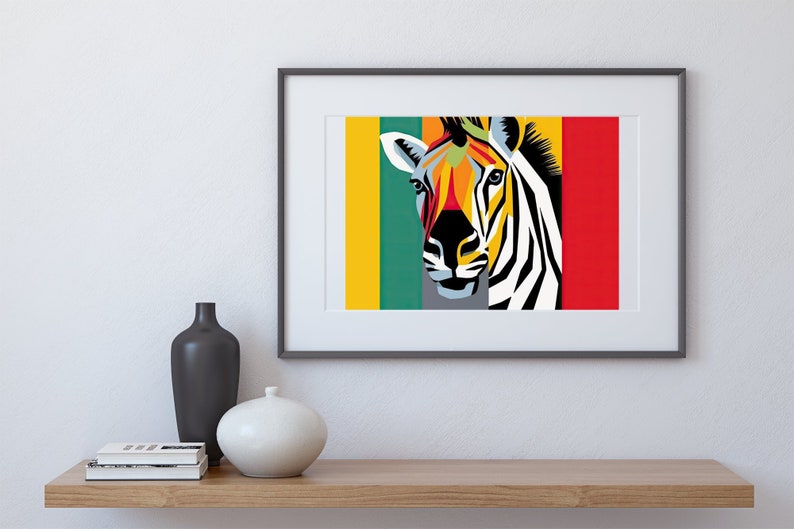

Sir Harry Johnston himself called it a Helladotherium, or a relative of other extinct giraffids. Much confusion arose regarding the taxonomical status of this newly discovered animal. In 1901, Sclater presented a painting of the okapi before the Zoological Society of London that depicted its physical features with some clarity. The generic name Okapia derives either from the Mbuba name okapi or the related Lese Karo name o'api, while the specific name ( johnstoni) is in recognition of Johnston, who first acquired an okapi specimen for science from the Ituri Forest. Okapia johnstoni was first described as Equus johnstoni by English zoologist Philip Lutley Sclater in 1901. From this skull, the okapi was correctly classified as a relative of the giraffe in 1901, the species was formally recognized as Okapia johnstoni.
Imaje of zebra animal skin#
Though Johnston did not see an okapi himself, he did manage to obtain pieces of striped skin and eventually a skull. Illustration from an original painting by Sir Harry Johnston, based on preserved skins (1901) Johnston was puzzled by the okapi tracks the natives showed him while he had expected to be on the trail of some sort of forest-dwelling horse, the tracks were of a cloven-hoofed beast. The Pygmies fed Johnston's curiosity about the animal mentioned in Stanley's book. When the British special commissioner in Uganda, Sir Harry Johnston, discovered some Pygmy inhabitants of the Congo being abducted by a showman for exhibition, he rescued them and promised to return them to their homes.

In his travelogue of exploring the Congo, Stanley mentioned a kind of donkey that the natives called the atti, which scholars later identified as the okapi. The animal was brought to prominent European attention by speculation on its existence found in press reports covering Henry Morton Stanley's journeys in 1887. įor years, Europeans in Africa had heard of an animal that they came to call the African unicorn. Strips cut from the striped part of the skin of an okapi, sent home by Sir Harry Johnston, were the first evidence of the okapi's existence to reach Europe.Īlthough the okapi was unknown to the Western world until the 20th century, it may have been depicted since the early fifth century BCE on the façade of the Apadana at Persepolis, a gift from the Ethiopian procession to the Achaemenid kingdom. The Okapi Conservation Project was established in 1987 to protect okapi populations. Illegal mining and extensive hunting for bushmeat and skin have also led to a decline in populations. Major threats include habitat loss due to logging and human settlement. The International Union for the Conservation of Nature and Natural Resources classifies the okapi as endangered. Juveniles start taking solid food from three months, and weaning takes place at six months. The juveniles are kept in hiding, and nursing takes place infrequently. The gestational period is around 440 to 450 days long, following which usually a single calf is born. In captivity, estrus cycles recur every 15 days.


Rut in males and estrus in females does not depend on the season. Okapis are herbivores, feeding on tree leaves and buds, grasses, ferns, fruits, and fungi. They are essentially solitary, coming together only to breed. Okapis are primarily diurnal, but may be active for a few hours in darkness. Females possess hair whorls, and ossicones are absent. Male okapis have short, distinct horn-like protuberances on their heads called ossicones, less than 15 cm (5.9 in) in length. Its coat is a chocolate to reddish brown, much in contrast with the white horizontal stripes and rings on the legs, and white ankles. It has a long neck, and large, flexible ears. The okapi stands about 1.5 m (4 ft 11 in) tall at the shoulder and has a typical body length around 2.5 m (8 ft 2 in). The okapi and the giraffe are the only living members of the family Giraffidae. Although the okapi has striped markings reminiscent of zebras, it is most closely related to the giraffe. It is the only species in the genus Okapia. The okapi ( / oʊ ˈ k ɑː p iː/ Okapia johnstoni), also known as the forest giraffe, Congolese giraffe and zebra giraffe, is an artiodactyl mammal that is endemic to the northeast Democratic Republic of the Congo in central Africa.


 0 kommentar(er)
0 kommentar(er)
